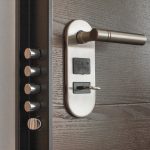Sleep studies can provide valuable insights into a child’s sleep patterns and identify factors affecting their health and development. For many children, monitoring sleep at home or in a clinic is part of managing conditions like pulmonary function issues or other sleep-related concerns. The appropriate method depends on various factors, including accessibility, symptoms, and the complexity of the condition. Understanding the differences between home sleep testing and in-clinic sleep studies can help pediatric neurologists recommend the best action.
Why Are Sleep Studies Suggested for Children?
Sleep studies provide a detailed look at how a child’s body functions during sleep. These tests can effectively monitor many conditions, such as breathing irregularities or disruptions to sleep cycles. Sleep is a key component of a child’s overall health, and disturbances can affect growth, mood, and cognitive functions.
Pediatric sleep studies may also help specialists understand how challenges such as pulmonary function impairments might influence a child’s rest. Identifying underlying causes allows medical providers to suggest targeted interventions. This information can help improve the child’s quality of life by reducing health complications associated with disrupted sleep.
When Is a Home Sleep Test a Good Option for Kids?
Home sleep tests are often recommended when symptoms are mild or straightforward to monitor. Conditions like snoring or suspected sleep apnea can be effectively observed at home. Physicians seeking entry-level data might find these tests useful as a starting point.
The comfort of a child’s familiar environment can also make home testing preferable. Many children may feel less anxious in their own bed, which could help provide more natural sleep data. Home testing also offers a cost-effective and convenient alternative to in-clinic options, particularly for families living in remote areas.
When Is an In-Clinic Sleep Study Necessary?
When more comprehensive monitoring is required, an in-clinic sleep study is typically advised. Complex symptoms or underlying health issues, such as certain pulmonary function disorders, often require the advanced tools and expertise found in a clinical setting. Clinics can monitor sleep via electroencephalography (EEG), which provides detailed brain activity data and other physiological metrics, such as heart rate and muscle activity.
Some pediatric sleep conditions, such as seizures that occur during sleep or severe sleep apnea, benefit from in-depth observations that are only possible in a controlled sleep lab. Clinicians can also adjust the environment and respond in real-time during testing to gather additional data. For children with intricate medical needs, clinical testing often delivers greater precision.
How Do Home and In-Clinic Sleep Tests Compare in Accuracy?
While convenient, home sleep tests generally provide a narrower dataset. They focus primarily on specific indicators, like breathing patterns and oxygen levels. The simplified setup allows for easier test administration but limits the scope of information collected, which may result in incomplete data for diagnosing complex or combined sleep issues.
In-clinic sleep studies, by contrast, offer a broader and more detailed assessment. Continuous monitoring of multiple systems within the body guarantees results are comprehensive. Factors such as brain activity, body movements, and respiratory effort are accurately recorded. For cases requiring detailed diagnostic information, the controlled environment of a clinic often provides more meaningful results than a home sleep test.
Review Pulmonary Function Concerns with a Specialist
Choosing between a home-based sleep test and an in-clinic study depends on the child’s unique symptoms and medical requirements. Discuss the options with your pediatric neurologist to determine the most appropriate approach. If you’re thinking about testing options for a child managing sleep or pulmonary function concerns, reach out to schedule a consultation today to make an informed choice.







